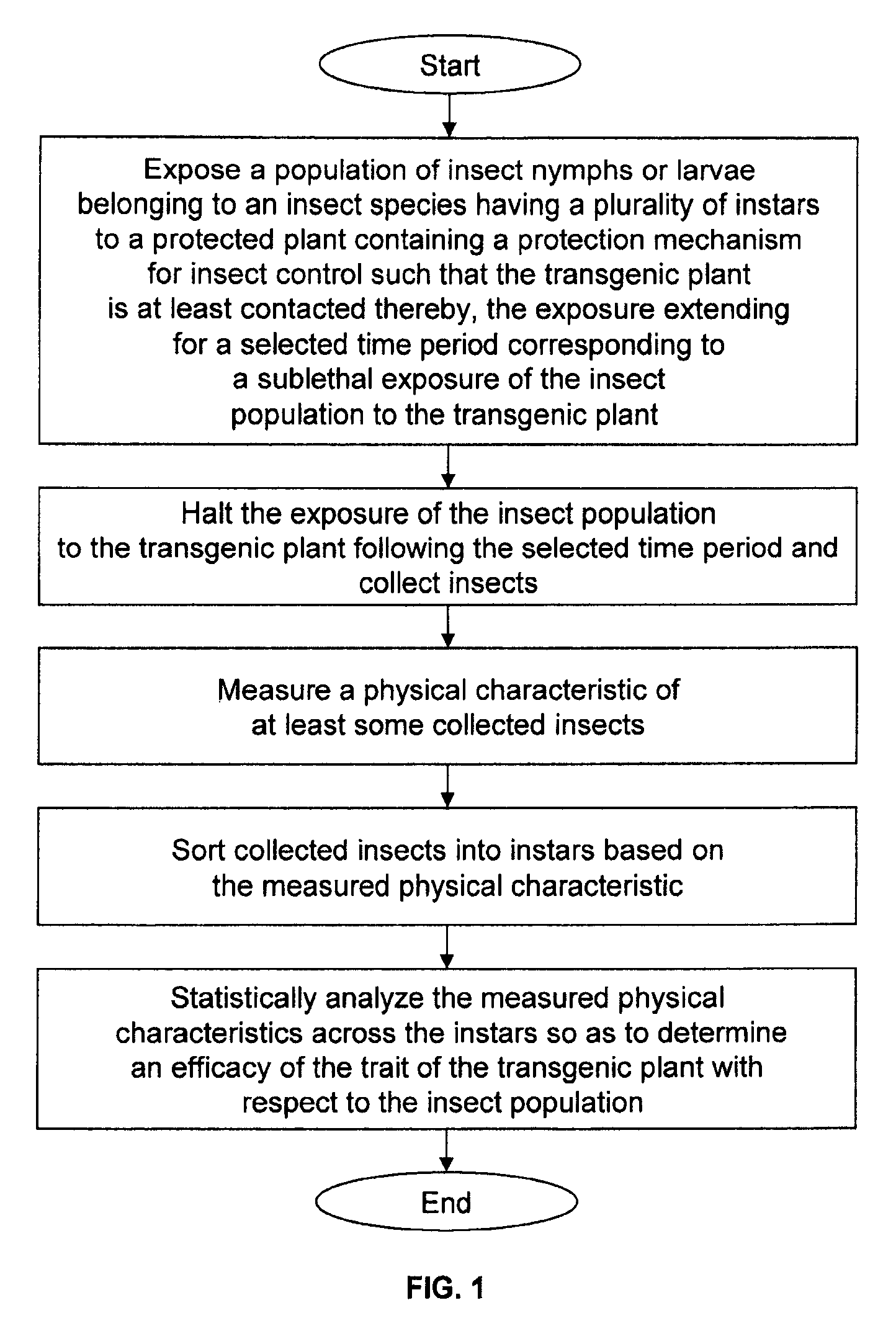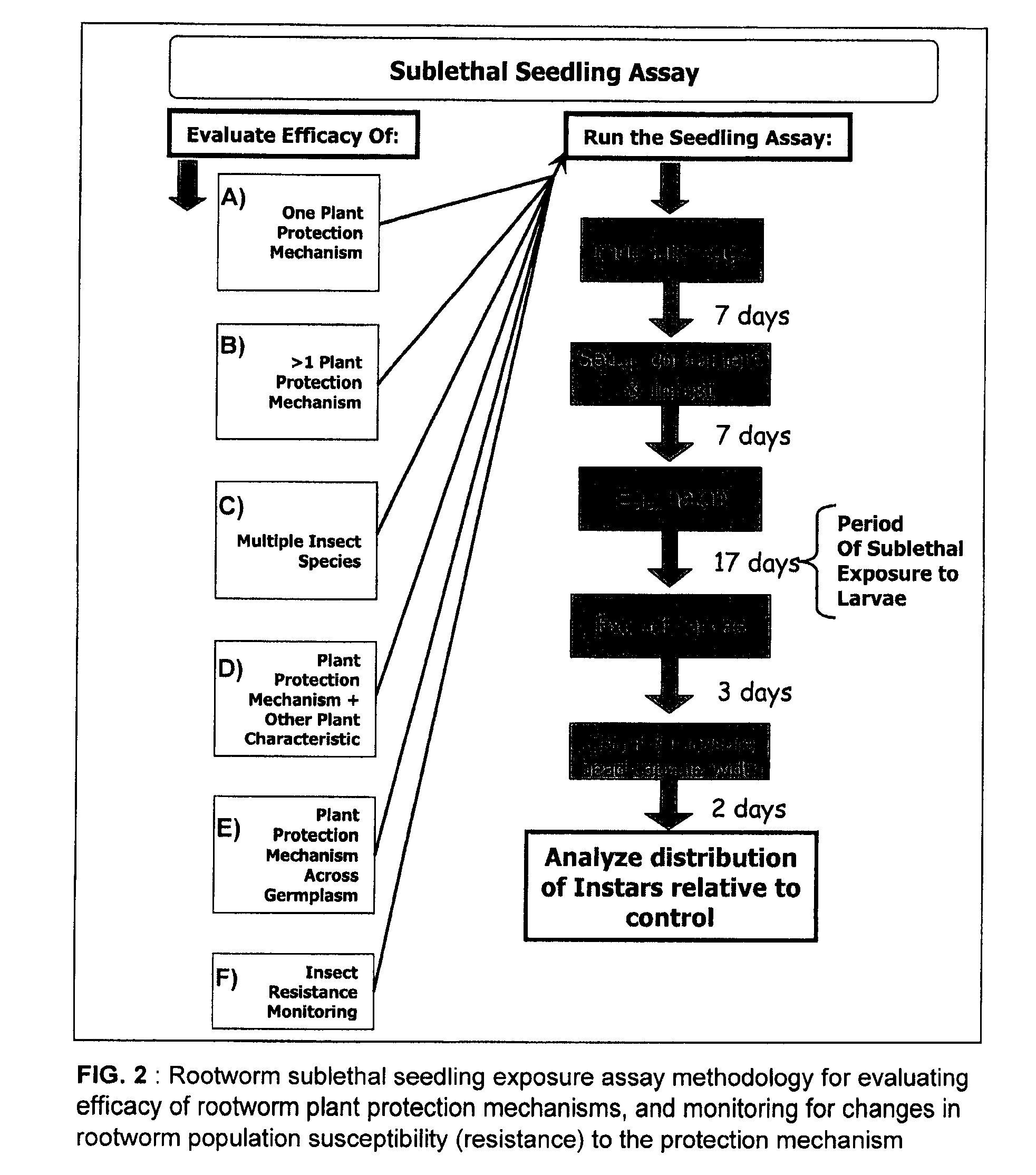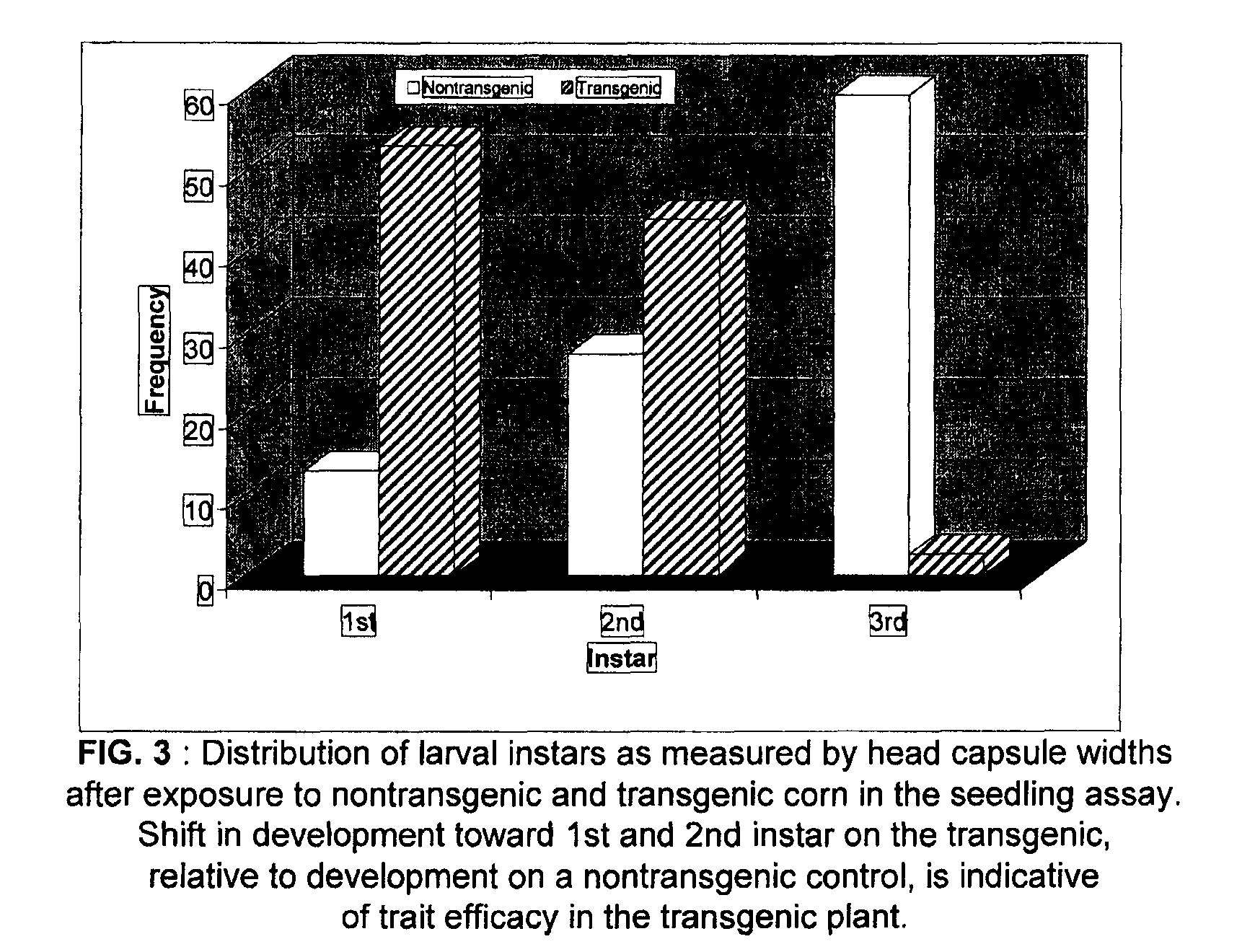Method of evaluating plant protection
a plant protection and plant technology, applied in the field of methods of evaluating plant protection, can solve the problems of difficult to determine whether a particular plant protection mechanism is effective in reducing damage from insect pests, pests are often the most damaging insect stage, and can be difficult to measure precisely, so as to maximize the duration of exposure of immature insects, maximize the differences in insect developmental rate, and similar head capsule width
- Summary
- Abstract
- Description
- Claims
- Application Information
AI Technical Summary
Benefits of technology
Problems solved by technology
Method used
Image
Examples
example 1
[0070]The following demonstrates methodology for one application of the present invention. Treatments included seeds from control or reference corn (CONTROL) and three protected plants which comprised experimental transgenic corn events (i.e., EXPERIMENTAL EVENT B, EXPERIMENTAL EVENT C and EXPERIMENTAL EVENT D). The protection mechanisms were tested for efficacy against corn rootworm larvae. The test system utilized 10¾×9¼×3½ inch clear plastic deli containers with hinged lids that snapped closed. Setup involved adding 150 ml of pre-germinated corn seeds to the bottom of each plastic deli container. A total of 3 containers were set up for each treatment. Next, 150 ml of a 1% systemic fungicide solution was added to each container. Each container was then filled with 1,000 ml of dry Metro-Mix 200 plant growth media. Immediately after adding the growth media, western corn rootworm eggs suspended in a 0.08% agar solution were dispensed onto the soil surface of each container. A total o...
PUM
| Property | Measurement | Unit |
|---|---|---|
| relative humidity | aaaaa | aaaaa |
| diameter | aaaaa | aaaaa |
| constant temperature | aaaaa | aaaaa |
Abstract
Description
Claims
Application Information
 Login to View More
Login to View More - R&D
- Intellectual Property
- Life Sciences
- Materials
- Tech Scout
- Unparalleled Data Quality
- Higher Quality Content
- 60% Fewer Hallucinations
Browse by: Latest US Patents, China's latest patents, Technical Efficacy Thesaurus, Application Domain, Technology Topic, Popular Technical Reports.
© 2025 PatSnap. All rights reserved.Legal|Privacy policy|Modern Slavery Act Transparency Statement|Sitemap|About US| Contact US: help@patsnap.com



